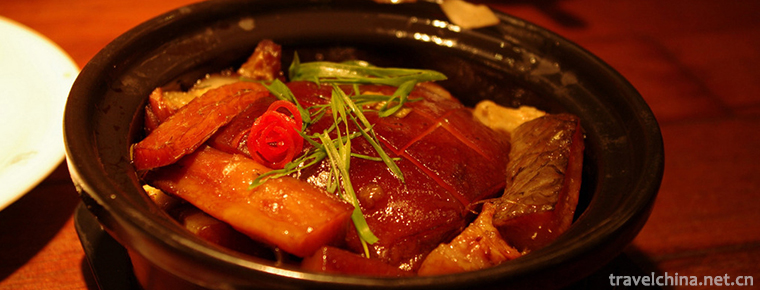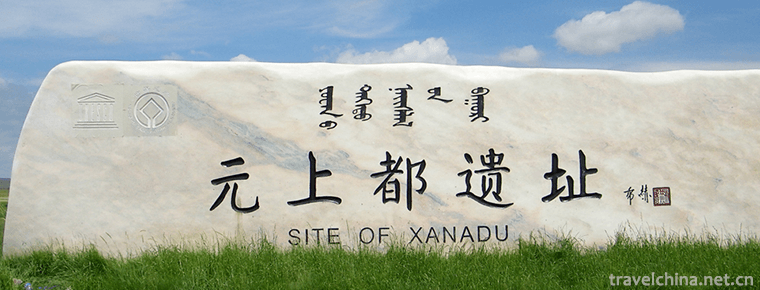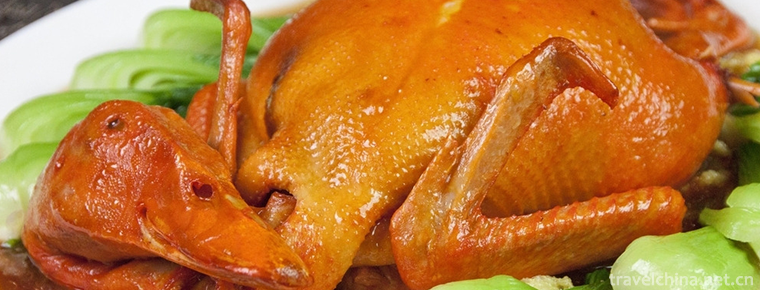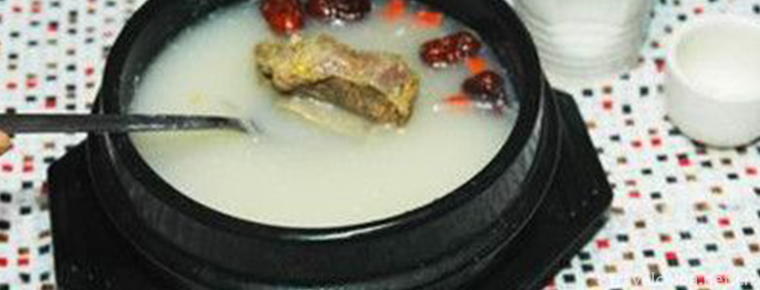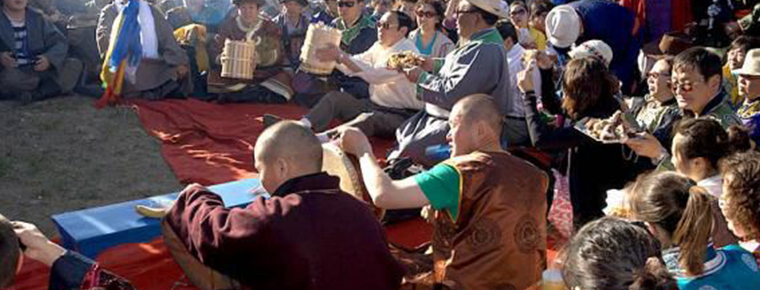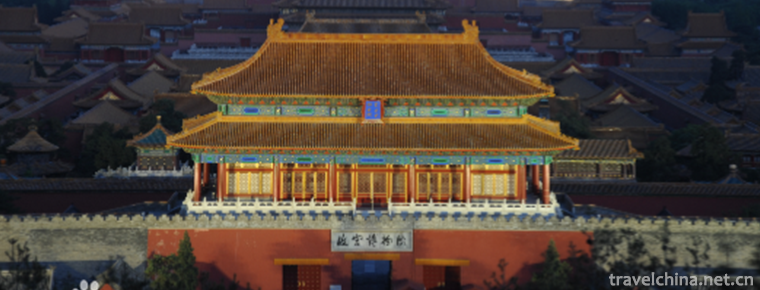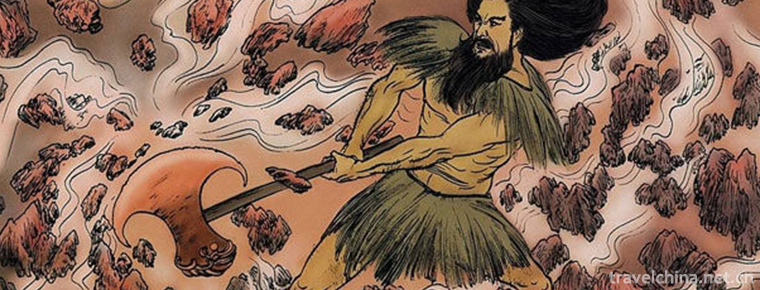Zha Quan
Zha Quan
Zha Quan is one of the five major schools of traditional Chinese long boxing, which is widely spread among Hui people. It originated in Shandong Province. Fengguan County "Zhang" Zha Quan, "Yang" Zha Quan and Rencheng "Li" Zha Quan three. Among them, "Zhang's" and "Yang's" in Guanxian County are related to the conscription of Chamir (Shangyi) of the Hui nationality in Xinjiang by Qi Jiguang, a Jining hero who fought against Japan in the late Ming Dynasty. The divisions between the two schools of Zha Quan in Guanxian County took place in Yongzheng period of Qing Dynasty, and the Rencheng School's skills may have formed earlier.
On June 7, 2008, Zha Quan was listed in the second batch of national intangible cultural heritage list with the approval of the State Council.
Zha Quan is one of the five major schools of traditional Chinese long boxing, which is widely spread among Hui people. It originated in Shandong Province. On June 7, 2008, Zha Quan was listed in the second batch of national intangible cultural heritage list with the approval of the State Council. Zha Quan is also popular in competitive Wushu competitions. It has been promoted and trained by major Wushu teams successively. The level of Zha Quan events has also been rising.
Introduction to boxing
In order to commemorate him, the local people named Cha Quan, which was handed down by Cha Shangyi, as "Cha Quan".
Tuo Zongqi and Cha Shangyi are brother of Shi. Jiaziquan, which was made by Xu Zongqi, was named "Shuoquan" , and was generally called "Cha Shuoquan". In addition, there are records of Zhengchuang leg boxing, slippery boring and slippery hook in Wudian. For example, "Talking about legs is Wu Dianzhang. For more than two hundred years now, Wu Dianzhang, a native of the Western Regions, was handed down by Panshi Wu's father.
course
origin
There are different opinions about the origin of Zha Quan. The popular saying is that in the late Ming Dynasty, Japanese invaders often invaded the southeastern coast of China. Qi Jiguang was appointed by the Ming Emperor as a general to fight against Japanese invaders. He wrote an imperial edict to the world, gathered troops for the Eastern Expedition and fought against Japanese invaders to protect the country. Chamir (Shangyi) of the Hui nationality in Xinjiang, out of patriotism, was recruited to fight Japan in the east. However, due to the long distance and changeable climate, during the long journey, it was infected through western Shandong. After careful care by the local Hui people, they gradually recovered. In return for his care, Cha Shangyi devoted himself to teaching his martial arts to Hui villagers. After his death, people named his martial arts Zha Quan as a commemoration. Skiquan was handed down by his disciple, Suo Zongqi, so there is a saying that "there is no distinction between skiing and checking".
Development
In the history of Zha Quan's development, we should clear up Yongzheng's "flying legs" in the early stage. In the Record of Guanxian County, it is recorded that "Shaliang, Zhigong, Wujin Land Reform Guard of Yongzheng in the past five years, who was appointed to patrol and arrest battalions, has been upgraded to the left battalion of Yansui Town in Shaanxi Province, and the Jinchuan Force Battle in the thirteenth year of Qianlong." "
At the end of Qing Dynasty, Zhang Qiwei of Guanxian County, Shandong Province, was skilled in martial arts. His fingers were like iron and steel, and he wore the belly of a cow. He also practiced a tiger tail bracelet, such as swimming dragons, flying phoenixes, fast as a button, brave as a tiger, which can be called a stunt.
Zhang Qiwei is a good fighter all his life. He is strict in giving boxing. He has trained a large number of famous fighters, such as Zhang Xiyan, Zhang Fengling, Zhang Yingzhen, Zhang Yingjian, Zhang Xitai, Li Chaoqun, Chang Zhenxi, He Zhenquan, Song Yizhou and He Tingying. Yang Hongxiu was also a famous Cha boxer in the late Qing Dynasty. He was tall, but very flexible. He was also known as "Quick Boxer Yang". He has trained a large number of high feet, such as the defeat of foreign strongmen "Shenli King" Prince Ping, "Shandong Shuangma" Ma Jinbiao and Ma Yongkui, as well as Yu Zhensheng, He Zhenjiang, Mi Guangting, Magfu and so on.
In addition, Li Enju (1857-1132), a Jining native, represented the "Li Style" boxing inspection. Because of the strict collection of apprentices, few apprentices were given. Its fist is strong and powerful, and its momentum is coherent. Jining was called the city in ancient times, so "Li-style" Zha Quan was also called the city Zha Quan. Li En was skilled in fighting. He Biaoying was appointed as a battalion officer in Guangxu in 1877. He resigned for various reasons and returned home. With the strong support of his father, Li Zhenji, he left home to seek teachers and friends to improve his martial arts. Jinyuan Gongbodyguard Bureau was set up in the city where he was in office for fifteen years. In his later years, at the invitation of Huo Yuanjia, who was less than 12 years old, he went to Shanghai Jingwu Sports Club to teach and spread Zha Quan to Shanghai and other parts of the country. During this period, he won the prize in the National Academic Racing Competition. In 1928, the 71-year-old took the national examination again and was awarded the title of "Warrior". Li Enju has made great contributions to the promotion and development of Li Style Zha Quan. Because of his strict teaching and teaching, his children Li Longbiao, Li Fengbiao, nephew Li Ruibiao and Sha Rongmin are the main inheritors. Li Longbiao, Li Fengbiao and Li Ruibiao all studied and taught in the Jingwu Association. Li Enju is the fourth generation successor of Rencheng Li-style Zha Quan, not the pioneer.
Unlike other types of boxing, Jining Zha Quan has become the Jining Zha Quan Research Association as early as 2004. It is an earlier local public Wushu organization. Nie Jixiang, president of the Association, was assessed as the inheritor of intangible heritage. In 2010, the Association was awarded the qualification of Wushu section evaluation by the National Wushu Association. At present, 117 members and more than 400 trainees are enrolled. The Association has passed 10 examinations. Over the past few years, efforts have been made to discover and sort out many ancient skills that are on the verge of being lost. A systematic cultural system of Cha Quan Wushu has been formed. It is a representative of sticking to the traditional training mode of wushu. It has been recorded by CCTV and many local TV stations successively. The main training base of the Institute is in Dongda Temple of Jining City, Shandong Province. The training time is 7-10 am on Saturdays and Sundays, and coaches organize training at 7-9 am on other days. Many martial arts fans with or without foundation can visit it. At present, the Research Association has a strong influence in the domestic traditional martial arts circles. It has represented Jining Wushu group to participate in frequent competitions and exchanges at home and abroad, and has achieved many excellent results. It has trained a large number of martial arts talents for Jining Wushu circles. The Research Association is also an early martial arts organization which carries out traditional martial arts dissemination by means of network media. Its "Zha Quan Website" has attracted many martial arts hobbies. It is even more rare that the Institute abandoned the idea of portal at the beginning of its founding and invited other elite fighters to join it. Every year, it also invited domestic elites from all walks of life to exchange lectures, which played a great role in the inheritance and development of traditional Wushu. At present, it has spread to Yunnan, Guizhou, Sichuan, Yu and other places in China. Foreign dissemination is mainly concentrated in New York and Mauritius.
Zha Quan has long been circulated in Beijing. Among them, Liu Kun, Hui, Zi Shi'an, an influential figure known as "Big Gun Liu", was born in 1868 and died in 1965 at the age of 97 in Linqing County, Shandong Province. His grandfather was on duty at Qingwang Palace and was the general head of the Eight Banners of the Qing Dynasty. His father guarded the north of the Qing Dynasty. Liu Kun was the head of Wushu in Beiying (Youying) and also taught the Four Kings. Later, at Dongzhimen North Street Mosque Martial Arts School, Zhu Qinglan introduced him to Major General Zhang Xueliang and went to National Northeast University as a professor. After liberation, Wushu was taught in the position of Ximen in Ritan. Mr. Liu was a member of the Political Consultative Conference of Chaoyang District from 1957 to 1959. Mr. Liu has a profound knowledge of literature and martial arts. He has won many masters with eight mothers and big poles, and is famous for his "big gun Liu" at home and abroad. Mr. Liu has excellent martial arts skills. His disciples include Zhao Depu, Yang Yucheng, Zheng Tianxiang, Jiang Xianglu, Dong Xinghua, Li Guangfu, Li Zhaoxiang, Liu Zhuyan (Zi), Wang Ku, Liu Hongchi, Du Jiantang, Hu Xicai, Zhu Changyou, etc. Chang Zhenfang, who came to Beijing in 1956 at the invitation of the State Sports Commission, should be the first person to spread Cha Quan in Beijing. Chang Zhenfang (1898-1979), a famous martial artist, loved martial arts from his childhood and kept practicing hard. He was highly valued by Mr. Zhang Qiwei. Therefore, as a teenager, he was famous for his martial arts and became the leader of Zhang's Cha Quan Men. Teacher Chang devoted his whole life to the study of Wushu teaching, with profound attainments, making Zha Quan develop to a new stage, with more prominent style characteristics and richer content. He is not only proficient in investigating boxing, but also knows all kinds of boxing, especially swordsmanship. As early as in Nanjing National Art Museum, Zhang Zhijiang, the curator, was well-known in the north and south of the Yellow River. Its action is fascinating and has become the mode pursued by many famous martial artists. In 1928, in Jinan, Shandong Province, Chang's teacher "pulled sheep by hand" and "relied on body boxing" lightly took the Wushu teaching of Shandong Police Bureau.
In 1937, Japanese invaders invaded North China. In the Qiqilugouqiao Incident, hundreds of millions of people unanimously demanded resistance to Japan. Teacher Chang witnessed the national disaster and was filled with righteousness and indignation. He resolutely joined the Anti-Japanese Sword Team (that is, the Wushu Team of the 44th Brigade of Feng Yuxiang) and became the captain of the team. In the battle around the Suli River in Fangshan District, the Japanese aggressors were destroyed.
During his stay in Beijing, Mr. Chang was successively a martial arts coach of Beijing Federation of Trade Unions, Workers'Stadium and Ministry of Public Security. In 1960, he was vice-chairman of Beijing Wushu Association. He has participated in the National Wushu Games, served as referee and chief referee for many times. Published "Four Routes Cha Quan", participated in the compilation of national Wushu A, B, C knives, guns, swords, sticks and boxing routines.
In his lifetime, Mr. Chang passed on art in Shandong, Henan, Hebei, Jiangsu, Jiangxi, Tianjin and other places, and trained a large number of talents. Among them, Zhang Wenguang, the first professor of martial arts in China, is the most outstanding person and is currently a consultant of Beijing Sports University. During his stay in Beijing, Mr. Chang broke the tradition of not accepting Han apprentices for the first time and began to absorb Han students. He systematically and unreservedly taught the skills of boxing inspection. The more successful students are Qi Muye, Zhai Jinsheng, Dong Shiming, Sun Changli, Xing Baoren (hence), Lu Jingchen, Cao Chongzhu, Yang Maolin, Zhang Xuchu (late), Ma Jinlong, Zhang Ruzhi, Zhang Ruwei, Li Quankun, Zhang Zhongliang, Bai Dejin, Huang Yungui, Wang Shaokun, Wang Shouren, Wang Litian, Wang Liying, Yang Sijun (late), Song Yunpei, Wang Shixin, Liu Hongchi, Dong. Bingzhang, Li Guorui, Han Yong, Mao Shuying, etc.
status
Zha Quan is one of the excellent types of boxing in traditional Chinese martial arts. It is prevalent in Shandong, Hebei, Henan and Beijing. After Shanxi, it spread all over the world, especially among Hui people.
After hundreds of years of practice and evolution, Zha Quan has formed three major schools: Zhang-style Zha Quan in Guanxian County, Yang-style Zha Quan in Guanxian County and Li-style Zha Quan in Rencheng County. The three schools have different routines and different methods of practice, but their principles are the same and their requirements are basically the same. Cha Quan's style is characterized by its stretching and erect posture, rapid force, dynamic and static, rigid and flexible, clear rhythm, flexible and changeable steps, rigorous structure and neat work frame. Regardless of going forward and backward, ups and downs, and striving to coordinate, the whole routine shows a free and unrestrained and vigorous and agile form, which is a relatively systematic type of long boxing.

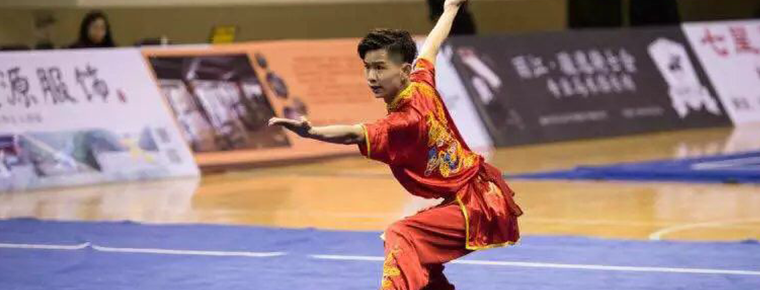
-
Dongpos braised pork
Dongpo meat, also known as roll meat and Dongpo stewed pork, is a famous traditional dish in Meishan and Jiangnan area.
Views: 209 Time 2018-10-27 -
Linqu canal
Lingqu, formerly known as the Qin Digging Canal, Zero Canal, Douhe Canal, Xing'an Canal and Xianggui Canal, is a great project created by the working people of ancient China.
Views: 327 Time 2019-01-30 -
Eight treasures duck
Babao duck is a characteristic traditional dish in Suzhou, which belongs to Shanghai cuisine and Su cuisine. But it is best cooked by the old restaurant in Shanghai, Town God's Temple.
Views: 202 Time 2019-03-27 -
Eight Diagrams porridge
Bagua porridge is derived from "Chinese recipe for longevity". Its main ingredients are turtle and japonica rice. It is made by boiling with other auxiliary ingredients. It can play a health.
Views: 138 Time 2019-03-27 -
Sebin Festival of Ewenki Nationality
"Serbin" is an Ewenki language, meaning "happy and peaceful". Sebin Festival is a traditional festival of the Ewenki people. On Sebin Festival, Ewenki hunters gather together.
Views: 161 Time 2019-04-28 -
Construction Skills of Official Ancient Architecture
In the process of construction and maintenance of the Palace Museum ancient buildings, a complete set of traditional palace building construction techniques with strict shape has been formed on the ba.
Views: 296 Time 2019-05-01 -
Pangu Myth
Pangu myth, the local traditional folk literature of Tongbai County and Biyang County in Henan Province, is one of the national intangible cultural heritage..
Views: 406 Time 2019-06-08 -
Pingyao Pushing Lacquerware Decoration Techniques
Pingyao polishing lacquerware decoration technology originated in Pingyao County, central Shanxi Province, and spread to the vast northern region. Lacquerware made with this technique has been well kn.
Views: 141 Time 2019-06-09 -
Dagu Glacier
Dagu iceberg scenic area is located in Heishui County, Aba Tibetan and Qiang Autonomous Prefecture, Sichuan Province, China, 102.44.15-102.52.46 E and 32.12.30-32.17.06 n, which is a rare modern mountain glacier. .
Views: 348 Time 2020-11-07 -
Nanchong Sports
By the end of 2019, Nanchong has 37 national youth sports clubs, 5 new national fitness routes and 1623 national fitness routes. Our athletes won 67 medals in national competitions and 288 in provincial competitions..
Views: 115 Time 2020-12-17 -
Plant resources in Guangan
The forest vegetation in Guang'an City belongs to the vegetation area of evergreen broad-leaved forest and coniferous broad-leaved mixed forest in the middle subtropics. Gymnosperms include Pinaceae, Cupressaceae, Ginkgo biloba and Metasequ.
Views: 301 Time 2020-12-19
